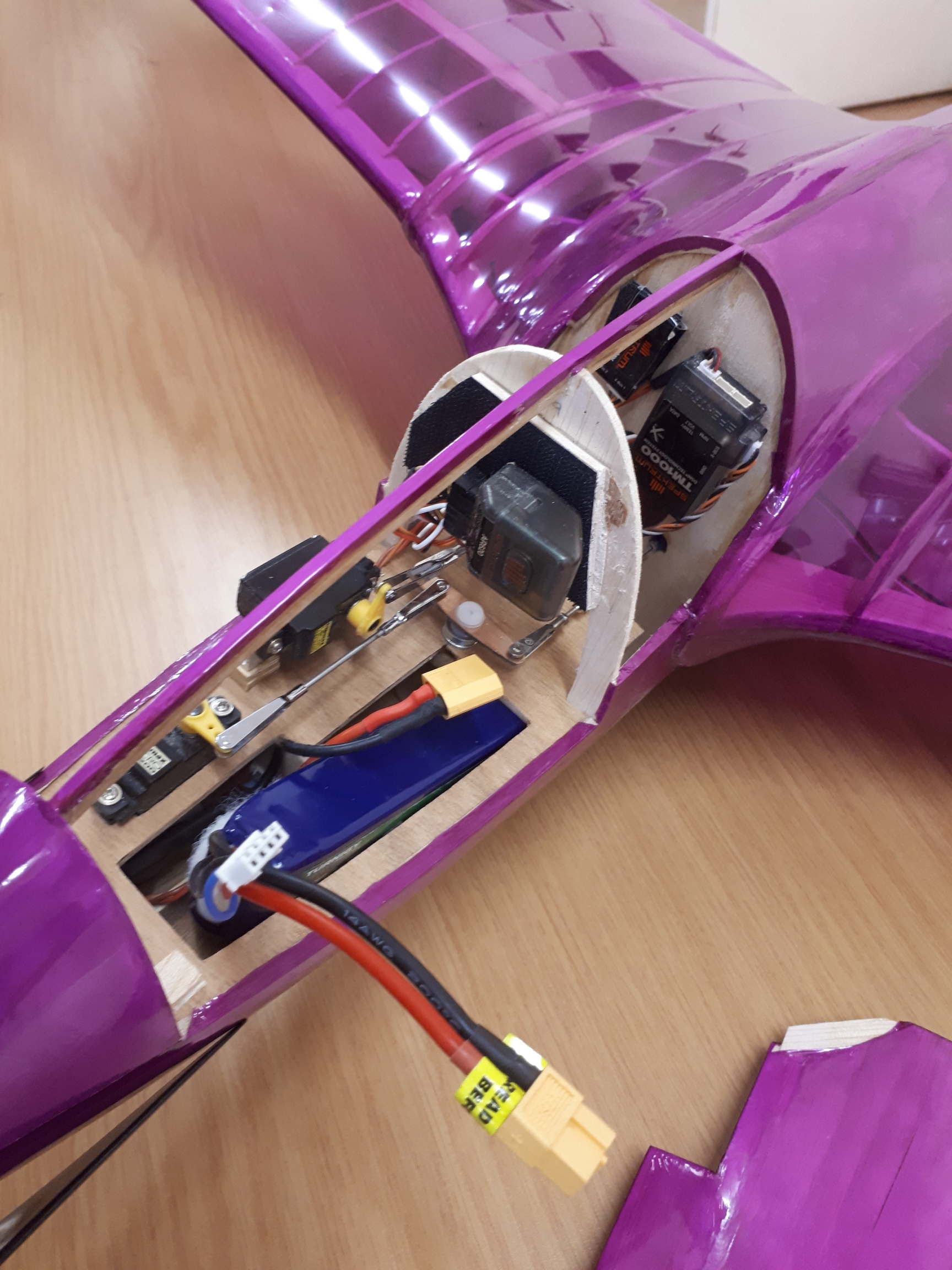SLOPING OFF...
...the Newsletter of Christchurch and District Model Flying Club for September 2022
Fillon Champion 46 – 2022 Construction by Richard Docketty
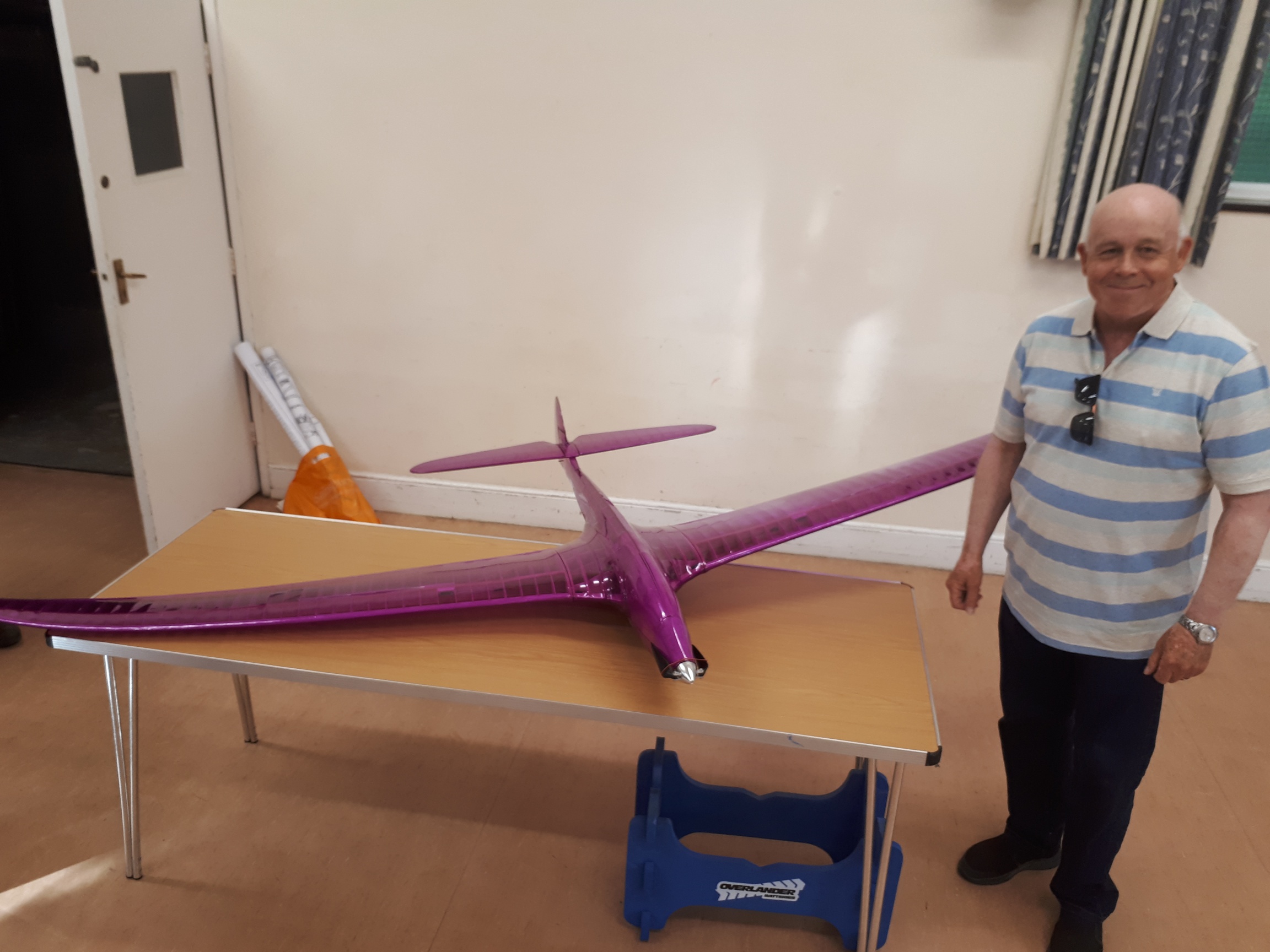
Fillon Champion Free Flight Glider – Modified for RC E-Flight
Era of Original Glider: 1940’s
Design Modifications: Chris Dunning
Builder: Richard Docketty
Background to original glider and its designer – Emmanuel Fillon
Emmanuel Fillon was an aeronautical master designer and builder, a genius in thefield of model aviation. From 1933 to 1971, he designed and built 130 to 160 different models. After retiring from his career as a mechanic and aeronautical designer he continued on with 120 more of all types, including gliders, research aircraft, twin-engine flexible transmission, speed, and rubber powered. It is said he constructed more than five hundred different models, many are now preserved in museums.
He was born in Marseilles, France in 1917 of a hairdresser-handyman father. He grew up in a town dominated by Naval Aviation and at an early age developed a vocation for airplanes. His talents in designing led him to produce a multitude of plans and illustrations. His logical thought processes demanded careful preparation before building and understanding that complicated work is often a series of simple operations placed in the right order. By the time he was 20, his skills earned him
the 1937 Wakefield World Championship.
A master of Free Flight, he chose materials for lightness and strength. Extremely light balsa wood cut to exact plans and covered with silk, tissue paper or microfilm, his skill was that of surgeons, using just one drop of glue too much would unbalance the airplane, it must be perfectly stable, balanced and as light as possible. Free flight is the most demanding aeronautics, he said, “Anyone interested in free flight must invent the model and then apply the laws of aeronautics.”
According to modelling enthusiasts, one of his most notable designs is the "Champion '46" glider with which he won the French Championship in 1946. This free flight glider had legendary flights, often flying out of sight and recovered miles away; on August 4, 1946 it flew out of sight from Marne, France to Freville, a distance of 33 miles.
The design is popular in the present day with modelers drawn to complex construction, graceful flying abilities and high performance.
Emmanuel was the honorary president of the Association des Amateurs ancient Aeromodels in France and was known world-wide for his aeromodelling accomplishments. He passed away on August 19, 2005.
Fillon Champion 46
Construction Details
Original Free Flight Plans: Aeromodeller Plans Service (via Sarik Hobbies) – original cost 16 shilling and 6 pence.
Modifications to original design:-
- Nose section extended/enlarged to accommodate motor assembly (ESC battery etc) and servos
- Canopy extended to allow access to whole of cockpit area from both sides of Fuselage.
- Wing joiner mechanism replaced with traditional steel blade and joiner boxes
- Tailplane design changed to ATM and its symmetrical section changed to flat bottom.
- Rudder design enlarged including redesign to incorporate a front counterbalance Section.
- Closed Loop system, with intermediate crank, for rudder control
- Carbon rod and Bell Crank assembly for ATM control
- Modular air brakes
- Motor, ESC and battery combo as recommended and supplied by George at 4- MAX
Technical Data:-
Wingspan: 111inches (approximately)
Main Aerofoil: Eiffel 400
Fuselage Length (including rudder): 64inches (Approximately)
Overall Weight (including battery, ESC, Prop etc): 4lb 11oz
Motor and ESC: 4-Max Value Power Package 2200kv
Battery: 3S 2200mah Lipo
Radio: Spektrum 6 channel rx with telemetry (for altimeter and vario reporting)
Parts:-
As per original plans wherever possible unless changed as required to adapt to the design modifications.
Various sizes and grades of balsa and plywood.
Carbon rod for ATM control
Wire, clevises etc for closed Loop
Modular Airbrakes from Radio Sailplanes – believe to be 1980’s vintage
Oracover transparent covering in violet/purple
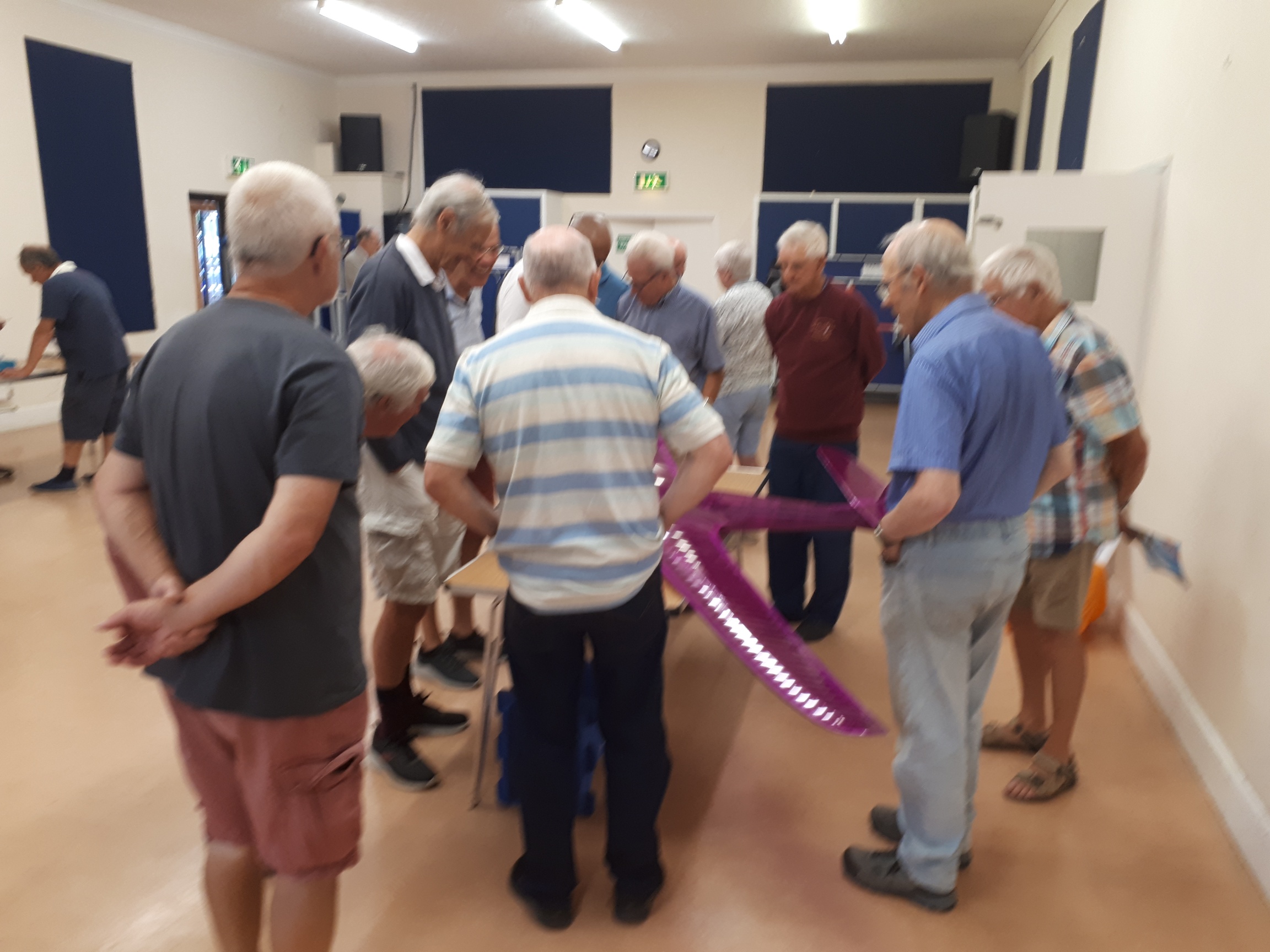
Construction Notes:-
Complete Scratch Build. This was NOT made from a kit.
Plywood, hardboard and foam jigs were required for laminating the rudder shape, tailplane wing tips, main wing tips and then a full length building board jig for constructing the polyhedral wing shape on.
Inaccuracies in original plan caused many of the fuselage parts to be either recut or remedied in situ, wasting time and materials. The central wing fairing section was particularly problematic to construct accurately. A cause for significant frustration and extending the build time.
Even if the base plans had been accurate, this turned out to be quite a complex build which really stretched my building abilities at times. Assistance came in the form of my building mentor and friend (Chris Dunning - MVSA) who offered guidance and practical help on many occasions. It is not an understatement that without Chris’ support this build may well still be sitting unfinished on the building board.
Maiden Flight Notes:-
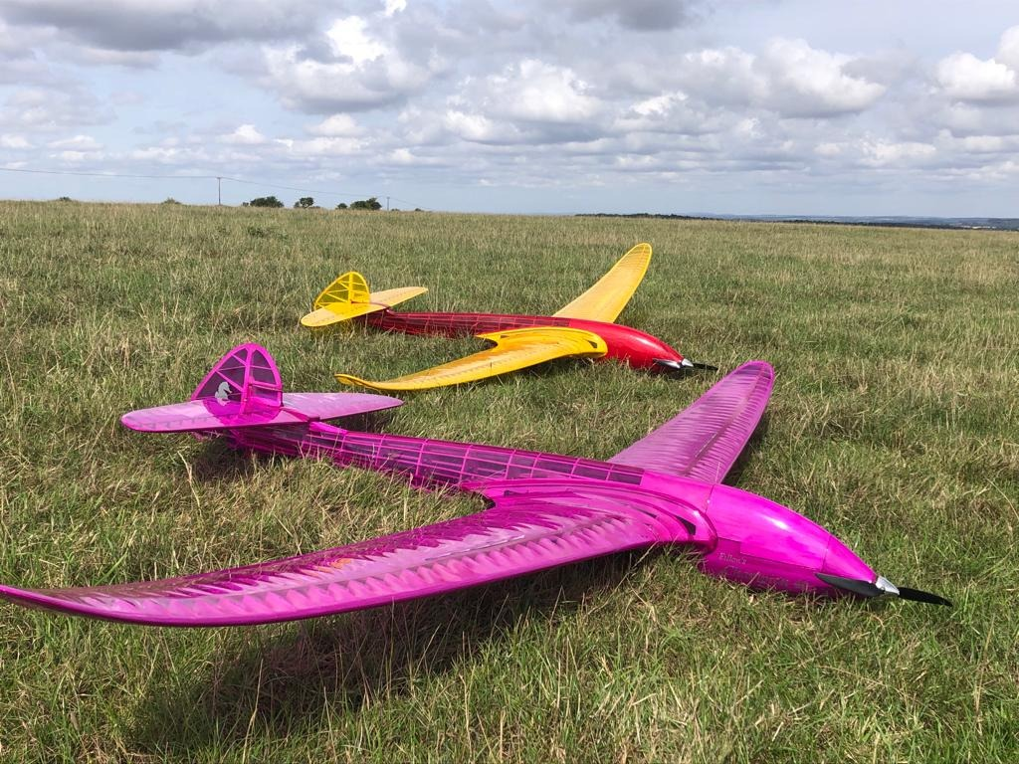
Maiden Flight took place at Win Green on the 25th August 2022
Pilots: Trevor Hewson and Richard Docketty
Ground Crew and Photographer: Yvonne Docketty
Conditions: Grey overcast sky with a smooth 10 to 12mph wind blowing onto the bowl
Flight Log: It was decided to fly my Miri 120, also a rudder elevator model, first to test the conditions and to have a practice landing in the field behind the bowl. All went well, despite having to avoid the myriad of fresh looking cow pats while walking backwards up the slope!
A programming issue with one of the airbrakes delayed the launch of the Champion slightly. Once this was resolved, all the controls were checked and double checked and got the thumbs up from Trevor and we made our way to the bowl. I asked Trevor to do the initial flight and trimming with me as his launcher.
A push from me and the Champion took to the air in a gentle climb with a little bit of Dutch roll before tracking straight and true out over the bowl. After little trimming of the elevator and a dive test, Trevor was happy and handed the controls to me. Wide turns, away from and into the slope were done with no fuss. Thermal turns were also made with ease. A few more circuits and it was time to test the airbrakes. Deployed slowly and in degrees, to see how they reacted, there was no drama, it just slowed down. Perfect.
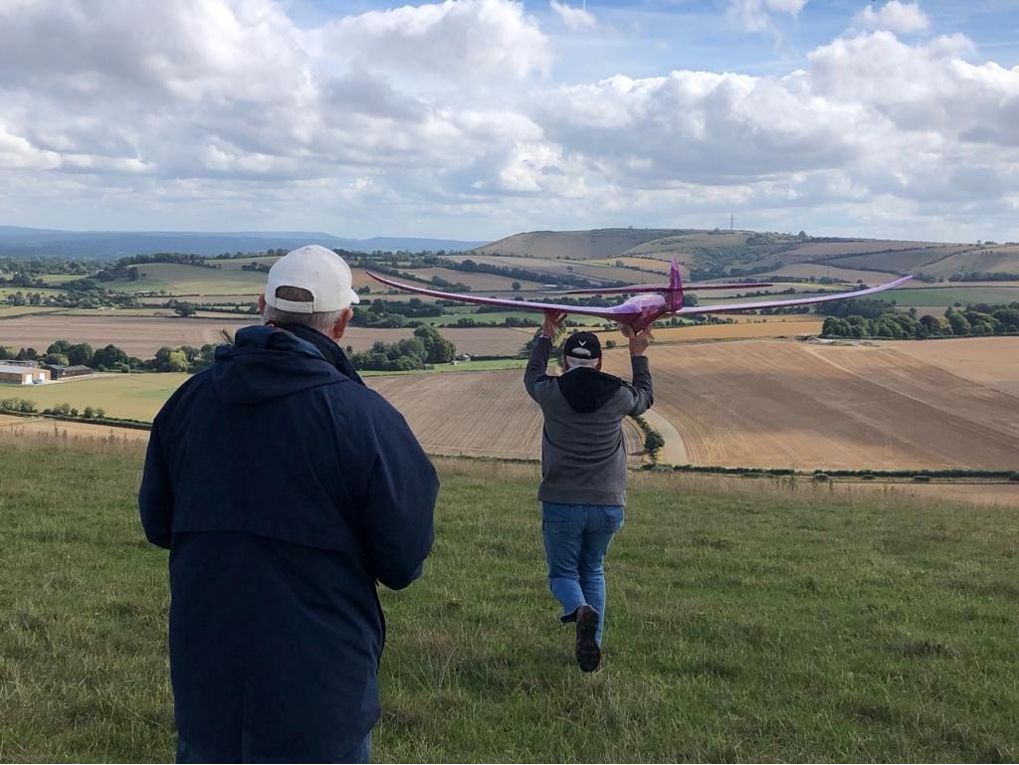
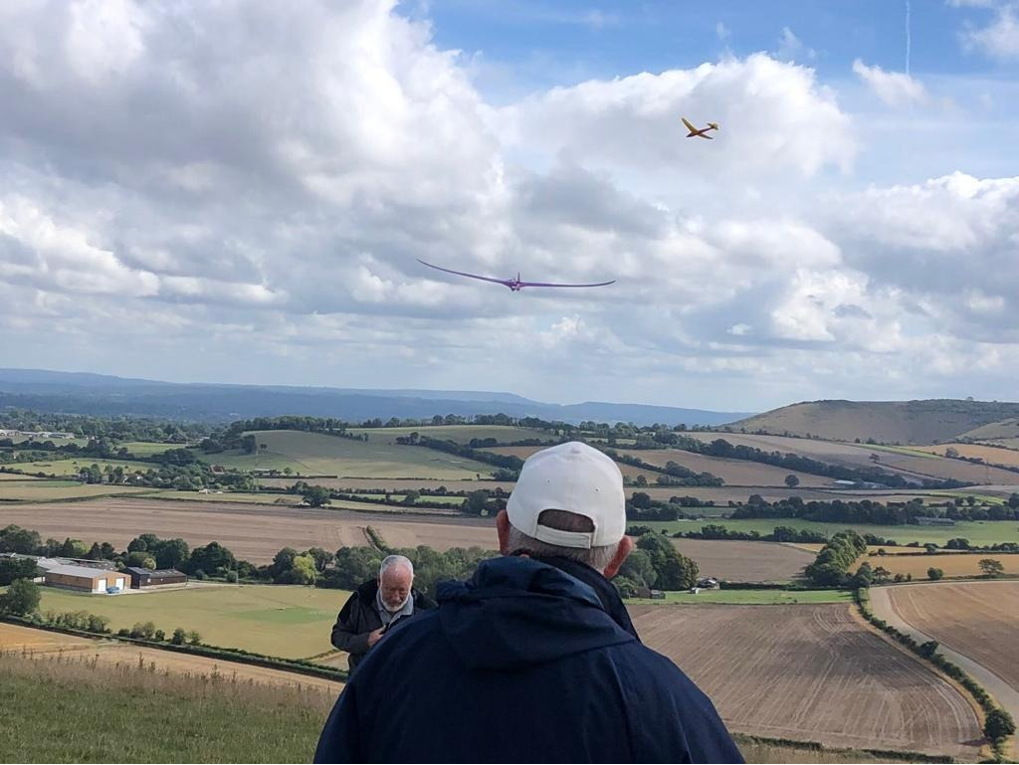
Next to test the motor. The motor power was slowly increased and it seemed to take to just before half way before there was a noticeable climb taking place. From half way on the climb became steeper. Perfect.
Motor off and back to pure gliding for a while and at one point the lift dropped off a bit so the motor was put back on to regain the height lost. All very easy and incident free.
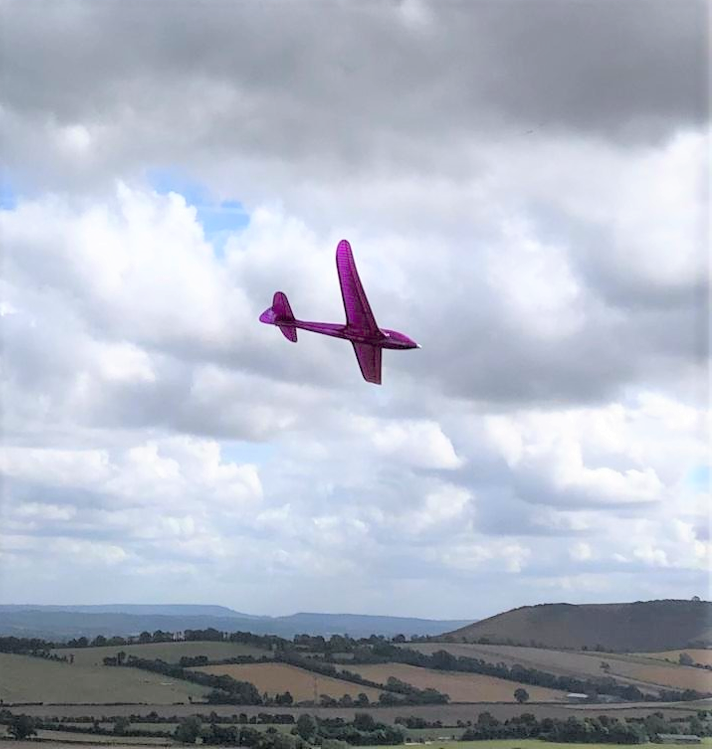
The original intention was to land the Champion in the field behind the slope, but a combination of the cowpats we encountered when landing the Miri and the gentle nature of the Champion it was suggested, by Trevor, a slope side landing would be perfectly feasible so the controls were handed back to him for the landing. The left hand side of the bowl was chosen for this and the airbrakes were deployed when the Champion was about 15-20ft off the ground. They proved to be effective enough to assist the landing with Trevor suggesting a smidgeon of elevator compensation dialled in to further maintain the pitch might help future landings. The only incident to report was the tuft of grass which got in the way of a perfect landing. You cant win them all I suppose.
Epilogue: This has been a long and, at times, very frustrating build to do, but ultimately it proved worth it as I have a very nice flying, good looking and somewhat unique e-glider to add to my collection. .
Since the Maiden flight, the Champion has flown again. This time on Saturday 27th August at the superb east facing slope in the Meon Valley. Again, a drama free and enjoyable flight of some 20minutes.
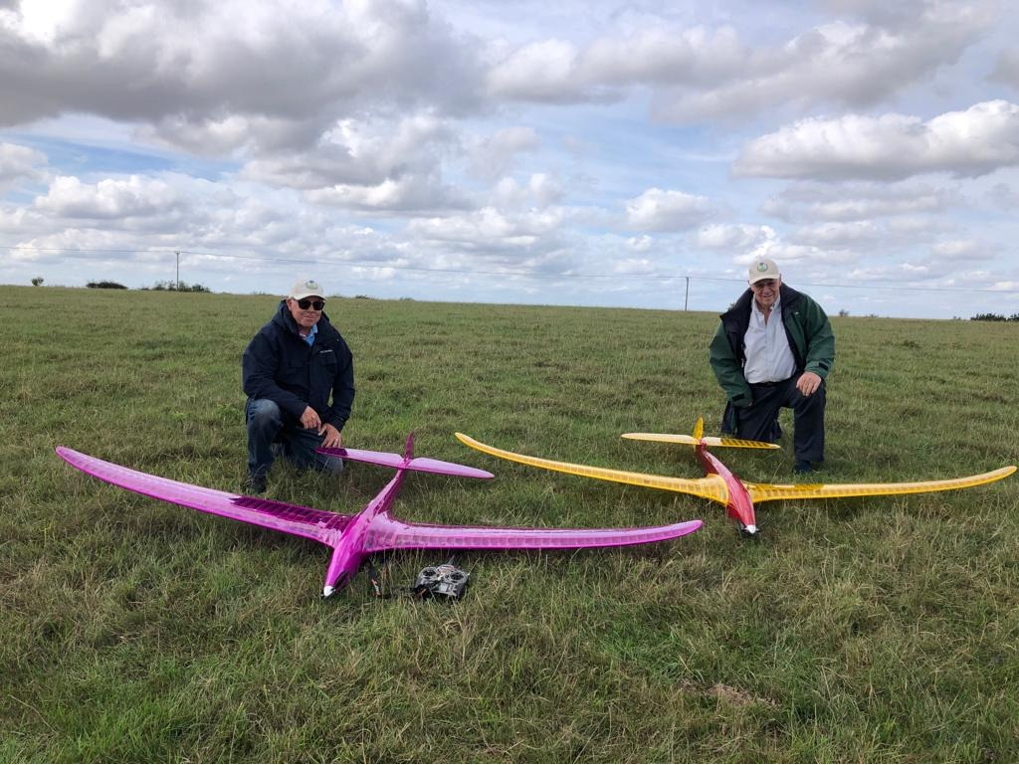
My thanks to Chris Dunning for his unwavering support and helping me over the various hurdles along the way and a very special thank you to my wife Yvonne for her patience and understanding when a three/four month build turned into nine months! My thanks also to Trevor Hewson for his expert assistance and calming influence during the preparation for and during the maiden flight.
Richard Docketty
